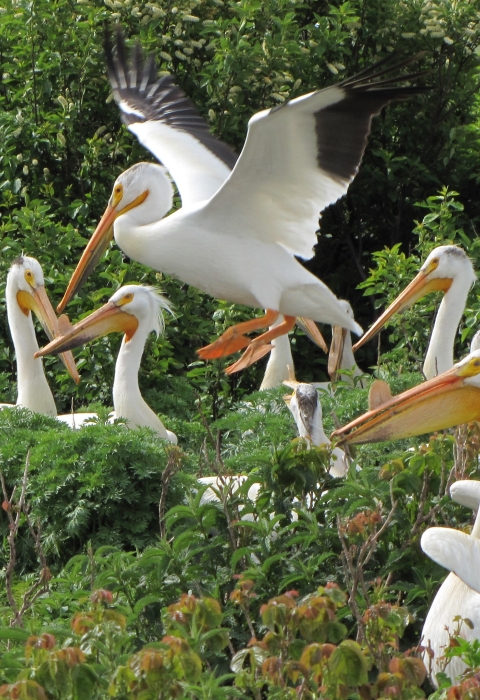What We Do
Wildlife conservation is at the heart of the National Wildlife Refuge System. It drives everything on U.S. Fish and Wildlife Service lands and waters managed within the Refuge System, from the purposes for which a national wildlife refuge national wildlife refuge
A national wildlife refuge is typically a contiguous area of land and water managed by the U.S. Fish and Wildlife Service for the conservation and, where appropriate, restoration of fish, wildlife and plant resources and their habitats for the benefit of present and future generations of Americans.
Learn more about national wildlife refuge is established to the recreational activities offered to the resource management tools used. Using conservation best practices, the Refuge System manages Service lands and waters to help ensure the conservation of native wildlife species.
Management and Conservation
Refuges use a host of scientifically sound management tools to address biological challenges. These tools are all aimed at ensuring a balanced conservation approach to benefit both wildlife and people. At this Refuge, this includes managing upland habitats through haying, grazing, and fire management, invasive species invasive species
An invasive species is any plant or animal that has spread or been introduced into a new area where they are, or could, cause harm to the environment, economy, or human, animal, or plant health. Their unwelcome presence can destroy ecosystems and cost millions of dollars.
Learn more about invasive species management, inventory and monitoring, and planning.
Protecting 4,385 acres of prime nesting habitat, the Refuge is evenly split between wetland and grassland habitats. Managing Chase Lake National Wildlife Refuge presents some unique challenges. All but 230 acres of the 4,385 acres are designated as wilderness area wilderness area
Wilderness areas are places untamed by humans. The Wilderness Act of 1964 allows Congress to designate wilderness areas for protection to ensure that America's pristine wild lands will not disappear. Wilderness areas can be part of national wildlife refuges, national parks, national forests or public lands managed by the Bureau of Land Management.
Learn more about wilderness area , which restricts the use of motorized vehicles and equipment to protect and preserve the area's natural beauty and natural character.
In addition to habitat management, American white pelican surveys have been conducted every year since 1972. Biologist use aerial photographs taken of each nesting area to count the number of nests in each photo to determine the total number of breeding birds.
Our Services
Cooperative Agriculture, Haying, and Grazing
To better accomplish our grassland management objectives, we regularly utilize agricultural practices to manage and enhance habitat for wildlife. If you are interested in grazing livestock, harvesting hay, or cooperatively farming lands on Chase Lake National Wildlife Refuge, please contact the Refuge Manager at (701) 752-4218 or chaselake@fws.gov.
Special Use Permits
We issue special use permits on a case-by-case basis. Most commonly, these permits are issued for activities such as specimen collection, closed-area entrance, or other permissible activities. Our permit program ensures that such activities are carried out in a manner that minimizes impact to wildlife. Contact the Refuge Manager to request issuance of a Special Use Permit.
Law Enforcement
U.S. Fish and Wildlife Service law enforcement officers have a wide variety of duties and responsibilities. Officers help visitors understand and obey wildlife protection laws. They work closely with state and local government offices to enforce federal, state and refuge hunting regulations that protect migratory birds and other game species from illegal take and preserve legitimate hunting opportunities. Other law enforcement duties include patrolling closed areas or wilderness areas, maintaining relationships with neighboring landowners, maintaining refuge boundaries and participating in public events.
Laws and Regulations
Management actions on national wildlife refuges are bound by many mandates including laws and executive orders.
